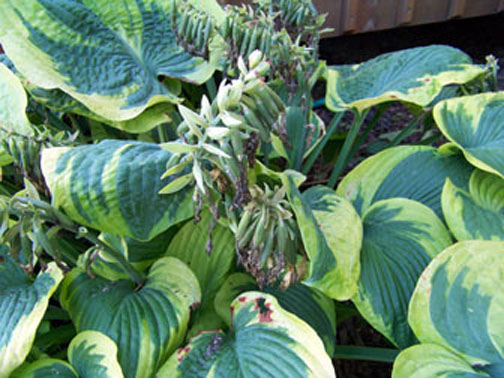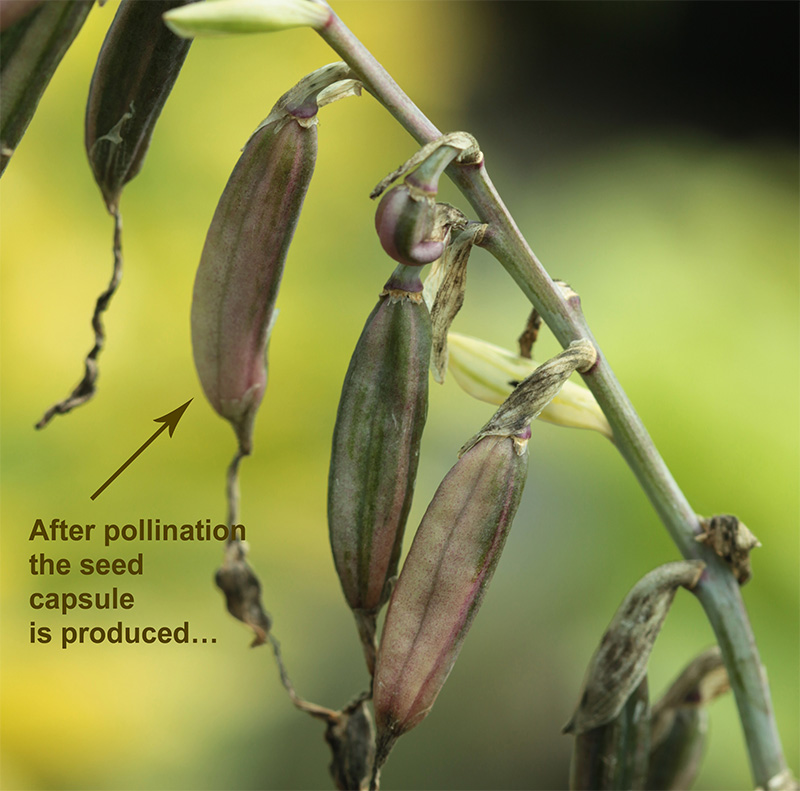To plant hosta seeds, prepare a well-drained location and sow the seeds at a depth of 1/8 inch.

Credit: artofnaturalliving.com
How to Plant Hosta Seeds : Step by Step Guide
Choosing The Right Hosta Seeds
When choosing hosta seeds for planting, it is important to first determine the desired hosta variety. Consider the growing conditions in your garden, such as the amount of sunlight and soil moisture, as different hosta varieties have varying requirements. It is also crucial to select the best seed source to ensure high-quality seeds that will result in healthy plants. Look for reputable seed suppliers or consider collecting seeds from mature hosta plants in your own garden.
Preparing For Planting
To successfully plant hosta seeds, it’s important to prepare the planting site and gather the necessary equipment and materials. When it comes to the equipment, you will need a small garden trowel, a watering can, and a garden hose. Moreover, ensure that you have enough seed starting mix and containers for planting the seeds.
| Materials | Quantity |
|---|---|
| Seed starting mix | Enough to fill containers |
| Containers | As needed for seed planting |
Next, prepare the planting site by choosing a suitable location with partial shade. Hostas thrive in moist, well-draining soil. Therefore, *ensure the soil has good drainage* and add compost or organic matter if necessary. *Avoid planting in areas with full sun exposure* as it can lead to leaf scorching. By following these steps, you will be ready to move on to the next stage of planting hosta seeds.
Planting Hosta Seeds
Planting hosta seeds requires a few important steps for optimal germination. One crucial step is soaking the seeds before planting. Soaking the seeds helps to soften their tough outer shell, allowing for better moisture absorption and quicker germination. To do this, you can place the seeds in a container filled with water for about 24 hours.
After soaking, you can sow the hosta seeds in containers or seed trays. Fill the containers with a well-draining potting mix and lightly press the seeds into the soil. It’s important to provide adequate moisture for the seeds to germinate. Keep the soil consistently moist, but not waterlogged, as excessive moisture can lead to fungal problems.
In addition to moisture, maintaining an optimal temperature is essential. Hosta seeds typically germinate best at temperatures between 65°F and 75°F (18°C-24°C). Consider using a heating mat or placing the containers in a warm location to provide the ideal conditions for germination.
Caring For Hosta Seedlings
Proper light conditions are essential for the healthy growth of hosta seedlings. When planting hosta seeds, make sure to place them in a location with partial to full shade. Excessive sunlight can scorch the delicate seedlings, while too much shade can hinder their development. Find a balance by providing them with dappled or filtered light.
Watering and fertilizing hosta seedlings is crucial for their well-being. Keep the soil consistently moist but not waterlogged, as excessive moisture can lead to root rot. Provide regular watering sessions and ensure the soil drains well. When it comes to fertilizing, apply a balanced, slow-release fertilizer in early spring and again in midsummer to promote healthy growth.
Protecting hosta seedlings from pests and diseases is important to ensure their survival. Keep an eye out for common pests such as slugs, snails, and aphids. Remove any weeds or debris that may harbor pests. Consider using organic pest control methods, like handpicking or using natural repellents. If you notice any signs of diseases, promptly address the issue to prevent further damage.
Transplanting Hosta Seedlings
Transplanting hosta seedlings requires proper timing and careful handling to ensure their successful growth. Determining the ideal transplanting time is crucial for their survival.
Before transplanting, prepare the new planting location by selecting a spot with partial shade and well-drained soil. Hostas thrive in moist soil but can also tolerate drought conditions.
When it’s time to transplant, gently loosen the soil around the seedlings’ roots. **Handle the seedlings with care** to avoid damaging their delicate roots.
Dig a hole in the new planting location that is slightly larger than the root ball of the seedling. **Place the seedling in the hole** and cover it with soil, pressing firmly to remove any air pockets.
Water the newly transplanted hosta seedlings thoroughly to settle the soil and provide essential moisture. **Continue to water regularly** to keep the soil consistently moist, but not overly saturated.
With proper transplanting techniques and adequate care, your hosta seedlings will establish well in their new location, rewarding you with beautiful foliage and vibrant blooms.
Nurturing Hosta Plants
When planting hosta seeds, it is important to provide regular watering and mulching to ensure optimal growth. Hosta plants thrive in moist soil conditions, so watering them consistently is crucial. Applying a layer of mulch around the plants helps retain moisture and suppresses weed growth.
In addition to watering and mulching, it is important to monitor the hosta plants for signs of nutrient deficiencies. Yellowing leaves or stunted growth may indicate a lack of essential nutrients. Applying a balanced fertilizer can help address these deficiencies and promote healthier plants.
Pruning and dividing hosta plants are also essential for maintaining their vigor. Pruning off old or damaged leaves encourages the growth of new foliage. Dividing the plants every few years helps prevent overcrowding and promotes better air circulation.
In summary, nurturing hosta plants involves providing regular watering and mulching, monitoring for nutrient deficiencies, and pruning and dividing as needed. These simple steps will help ensure your hosta plants thrive and beautify your garden.
Common Mistakes To Avoid
One common mistake to avoid when planting hosta seeds is overwatering or underwatering the plants. Hostas prefer moist soil, but excessive watering can lead to root rot and other issues. It is important to water the plants consistently and ensure that the soil remains moist but not waterlogged. On the other hand, neglecting to water the plants sufficiently can cause them to become dehydrated and suffer from stress.
Another mistake to avoid is planting hosta seeds too deeply. While it is essential to cover the seeds with a thin layer of soil, burying them too deeply can hinder their germination and growth. It is recommended to plant the seeds at a shallow depth, usually about twice the size of the seed.
In addition, not controlling weeds can also be detrimental to the growth of hosta plants. Weeds compete with hostas for nutrients, water, and sunlight. Regularly removing weeds from the surrounding area and maintaining a weed-free environment will help the hostas thrive.
Troubleshooting And Problem Solving
Hostas are beautiful plants that are relatively easy to grow from seeds. However, like any other plant, they can encounter various issues that may hinder their growth. One common problem is the occurrence of plant diseases. It is crucial to be able to identify these diseases early on so you can take prompt action to treat them. Common plant diseases that can affect hostas include powdery mildew, crown rot, and leaf spot.
Additionally, pests such as slugs, snails, and aphids can also attack hostas. Keeping a close eye on your plants and taking appropriate steps to control and manage these pests is essential for maintaining the health of your hostas. It is also important to address growth issues and abnormalities in your hostas. Factors such as lack of sunlight, poor soil quality, or improper watering can cause stunted growth or abnormal leaf development. By addressing these issues and providing the necessary care and attention, you can help your hostas thrive.
Harvesting And Saving Hosta Seeds
Knowing when the seeds are mature is crucial for successful harvesting of hosta seeds. To determine maturity, look for seed pods that have turned brown and dried out. Avoid harvesting too early as immature seeds may not germinate. Once the seed pods are mature, gently remove them from the hosta plant.
To extract the seeds, gently break open the dried seed pods. Inside, you will find small black seeds. It is important to handle the seeds with care to avoid damaging them. Store the seeds in a cool, dry place to prevent moisture from affecting their viability. Airtight containers or sealed bags can help keep the seeds fresh for a longer time.
| Step | Process |
|---|---|
| 1 | Wait for the seed pods to turn brown and dry |
| 2 | Remove the seed pods from the hosta plant |
| 3 | Break open the dried seed pods |
| 4 | Extract the small black seeds |
| 5 | Store the seeds in a cool, dry place in airtight containers or sealed bags |
Frequently Asked Questions Of How To Plant Hosta Seeds
How Long Does Hosta Take To Grow From Seed?
Hosta typically takes around 2-4 weeks to germinate and 3-5 years to fully mature from seed.
Do Hostas Grow Well From Seed?
Yes, hostas can grow well from seed, yielding beautiful plants with a variety of foliage.
How Hard Is It To Grow Hostas From Seed?
Growing hostas from seed is not difficult. It requires time, patience, and proper care.
Can I Plant Hosta Seeds Outside In The Fall?
Yes, you can plant hosta seeds outside in the fall for successful growth.
Conclusion
When it comes to planting hosta seeds, it’s important to follow the proper steps to ensure successful growth. By understanding the right time to plant, the ideal location and soil conditions, and the method of planting, you can give your hosta seeds the best chance to thrive.
Remember to provide consistent watering and make sure the seeds receive adequate sunlight for optimal growth. By carefully tending to your hosta seeds, you can enjoy beautiful and vibrant hosta plants in your garden. So take the time to prepare the soil, sow the seeds, and provide the necessary care, and you’ll be rewarded with a stunning hosta garden.
Don’t hesitate to try different techniques and experiment with different hosta varieties to create a unique and eye-catching display. Happy gardening!

